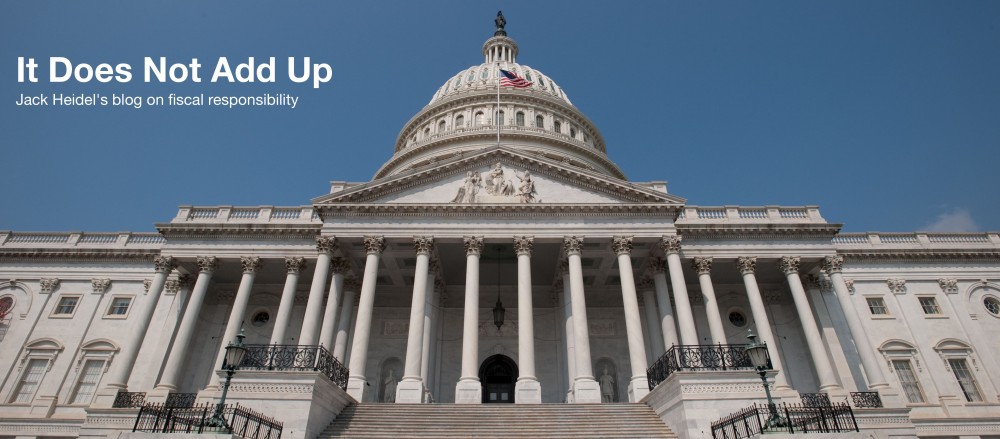One of the major problems facing the United States today is the high cost of healthcare. We spend almost 18% of GDP on healthcare, both public and private, almost twice as much as any other developed country. A big reason for the high cost is the low out-of-pocket consumer spending on health services in the U.S.
My last post discusses a general plan, involving catastrophic health insurance and health savings accounts, for getting the overall cost of healthcare under control.
 Once we have a handle on the overall problem, we then need to focus on the cost of the Medicare entitlement program for retirees. The problem here is easy to understand. In just 15 years enrollment in Medicare will increase to over 80 million beneficiaries from 57 million today. Likewise there are 3.1 workers per beneficiary today and there will be only 2.4 in 2030 (see above chart).
Once we have a handle on the overall problem, we then need to focus on the cost of the Medicare entitlement program for retirees. The problem here is easy to understand. In just 15 years enrollment in Medicare will increase to over 80 million beneficiaries from 57 million today. Likewise there are 3.1 workers per beneficiary today and there will be only 2.4 in 2030 (see above chart).

The second chart demonstrates that Medicare will be the major component of increases in federal spending in the coming years (with the other entitlements of Social Security and Medicaid following right behind).
So the question is: how do we control Medicare spending within the context of overall health-care reform? Here is a proposal from James Capretta of the American Enterprise Institute:
- Medicare recipients would receive fixed payments toward the coverage option of their choice, based on their age, income and health status. The traditional Medicare program would be one of the choices. Enrollees choosing less costly coverage options would see a reduction in their premiums.
- Premium payments would be comparable to subsidies and tax credits received from the reformed Affordable Care Act.
- Privately run managed care plans provide benefits at far less cost than traditional Medicare. Beneficiaries would share in the savings.
Conclusion. It needs to be emphasized as strongly as possible that the point of Medicare reform is to lower costs to both individuals and the government, sa that Medicare can be preserved indefinitely into the future.

Jack,
Can you explain how “privately run managed care plans provide benefits at far less cost than traditional medicare. Is it because of the clients they serve, the ability to drop plans or raise costs or what? In short, does private care really serve only the upper middle class and beyond?
Also, if I make a comparison with the private and public prison systems, the argument had been that private companies can do so much better at lower costs than public services. The result has been not much change in costs but a complete absence of rehabilitation services in the prison system, plus a most hazardous lack of health care for the inmates. I continue to question the value of the capitalistic system when it comes to human services, whether it be health, education, roads and bridges and general public welfare. The profit making system seems manageable when we are dealing with inanimate things or objects. But when it comes to caring for the general public welfare, and particularly in education and welfare, I find little equality from the private sphere.
Doug
Here is the reference for the lower costs of privately run managed care plans: http://www.medpac.gov/docs/default-source/data-book/june-2016-data-book-health-care-spending-and-the-medicare-program.pdf. The idea is that with higher deductibles and health savings accounts, people will pay more attention to their out of pocket costs and this will save money for the federal government which has an enormous debt problem.
Private prisons are operated by the states (but not in Nebraska) and not the federal government. States balance their budgets but the federal government doesn’t.
It is precisely in the human service areas of health and education that costs are out of control and why strict cost control measures are needed.